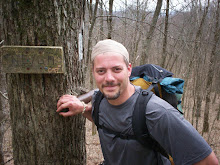This past weekend, my girlfriend's dad found a young Red-Tail Hawk in his backyard. The bird seemed cold & weak, perhaps even dying, while Zoe the pug barked & danced around in front of the raptor. So, Art put on a pair of leather gloves and, without any resistance from the young hawk, picked it up and brought it inside the house, down in the basement.
He phoned one of his daughters, Joy, a knowledgeable lover of animals, and she came over to care for the bird for a couple of days. On Monday, she brought the hawk to the local animal rescue league. No doubt her diligent & patient care of the animal over the weekend saved its life.
On Sunday, I was able to see the bird up close, even had the opportunity to touch his feathers & massage the back if his neck. I don't know if it was male or female, but we all referred to the bird as a male. Joy had mixed some water with chicken livers and, using a small syringe, patiently fed & cared for the hawk. She told me that the bird's color was much better than the day before, soon after he was taken from the cold.
No one seems to know exactly where the hawk came from, or how he ended up in Art's back yard. There are no trees in the yard itself, so apparently he wandered onto the property from a nearby yard. He wasn't moving very much when he was found, so it's unknown whether or not he can fly. He could've been hurt somehow or perhaps became hypothermic in the cold weather.
Hawks are prolific hunters, feeding mostly on rodents, snakes & lizards. They can live over 20 years in the wild and have no natural predators. Diminishing habitat & pollution have become its fiercest enemies over time, placing humans as its only real predator. Females are typically 1/3 larger than the males.
One thing that was so striking when I was up close observing this amazing creature was how alert he seemed to be. No movement went undetected, and when he looked at you, it was almost as if he was looking through you. A hawk's eyesight is 8 times more powerful than a human's, able to zoom in on a squirrel or even a beetle from an incredible distance.
To have seen & touched the young hawk was a really cool experience. I hope & trust that he'll recover fully & be out soaring the skies soon. For more info on Red-Tails, check out these links below: http://animals.nationalgeographic.com/animals/birds/red-tailed-hawk.html
http://www.desertusa.com/aug96/du_hawk.html
http://www.wildlifesearch.com/hawk.htm .
~The Pilgrim.







0 comments:
Post a Comment